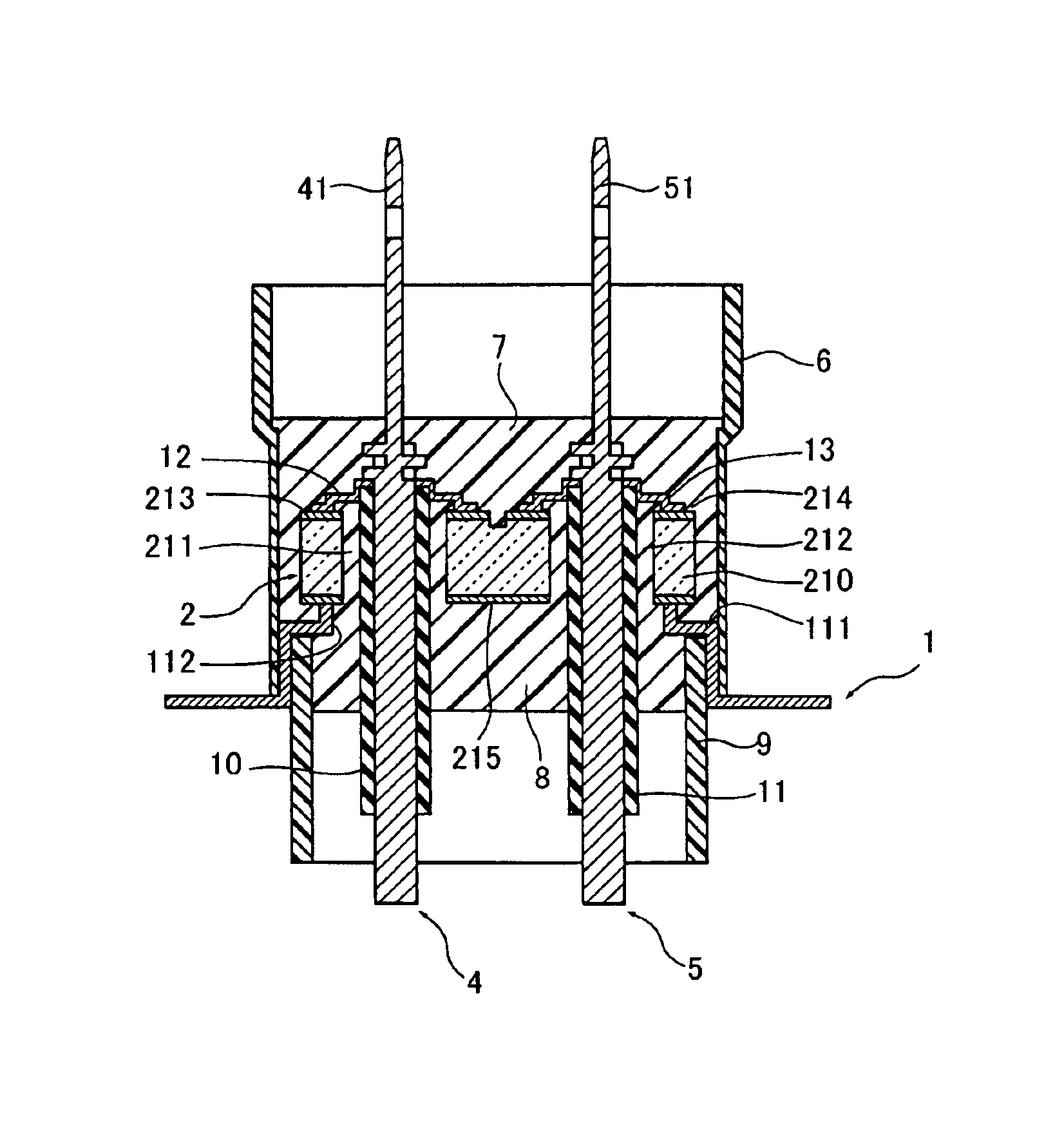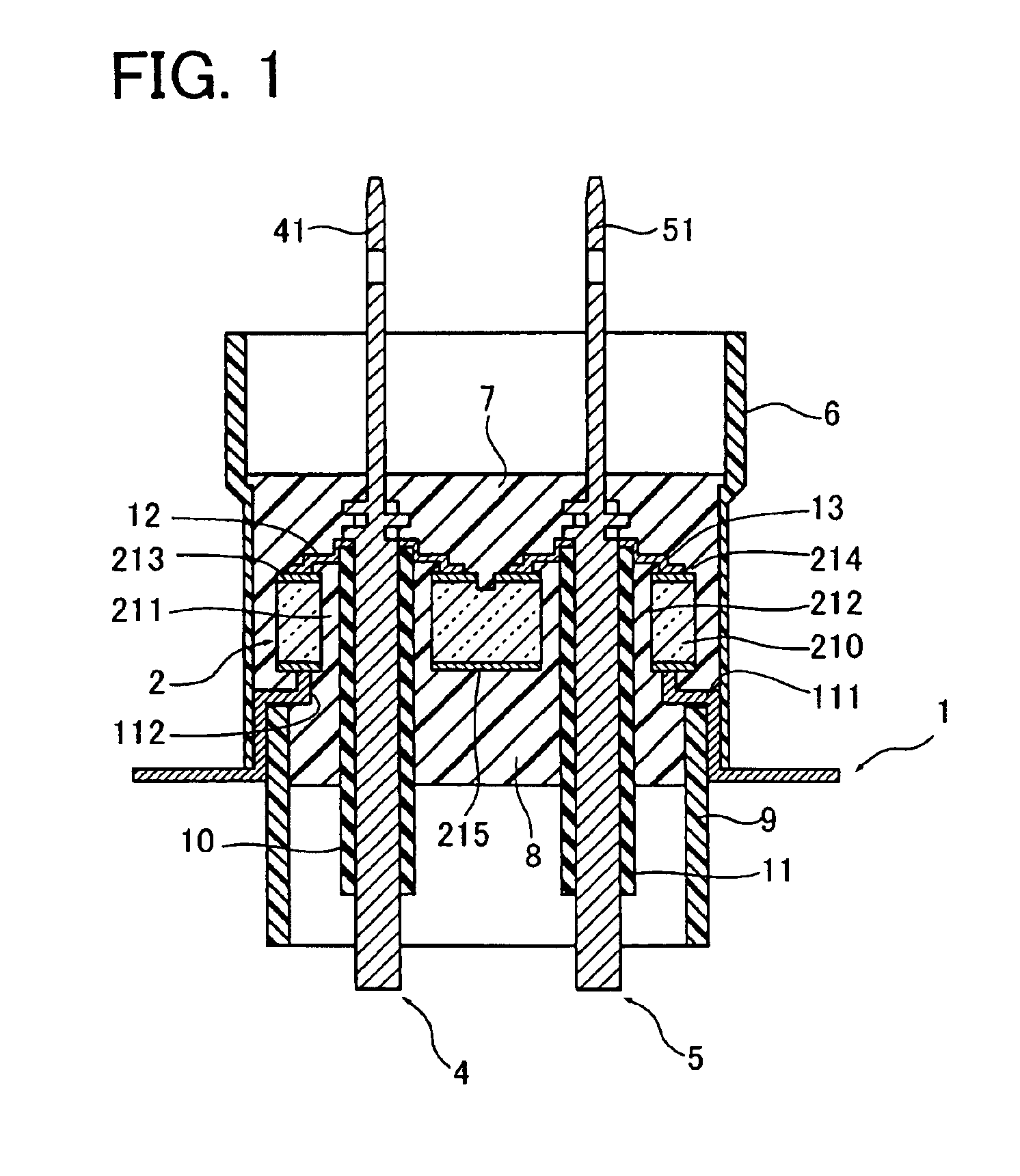High voltage capacitor and magnetron
a high-voltage capacitor and magnetron technology, applied in the direction of feed-through capacitors, fixed capacitor details, transit-tube leading-in arrangements, etc., can solve the problems of dielectric ceramic material expanding, gap formation, dielectric ceramic material deterioration, etc., to avoid deterioration of characteristics and electrical short circulation, increase bonding force, and high reliability
- Summary
- Abstract
- Description
- Claims
- Application Information
AI Technical Summary
Benefits of technology
Problems solved by technology
Method used
Image
Examples
Embodiment Construction
[0031]Referring to FIGS. 1 and 2, the high-voltage capacitor includes a grounding metal 1, a capacitor 2, through conductors 4 and 5, an insulating case 6, an outer insulating resin 7, an inner insulating resin 8, an insulating cover 9 and insulating tubes 10 and 11 constituted of silicon or the like.
[0032]The grounding metal 1 has a raised portion 111 at one surface thereof, with the raised portion 111 having a through hole 112. The capacitor 2 is provided on the raised portion 111 and an electrode 215 of the capacitor is secured to the raised portion 111 by a means such as soldering. The through conductors 4 and 5 pass through the through holes 211 and 212 of the capacitor 2 respectively and also through the through hole 112 of the grounding metal 1 and are connected to electrodes 213 and 214 respectively via electrode conductors 12 and 13 achieving electrical continuity.
[0033]The outer insulating resin 7 fills the space around the capacitor 2 at one surface of the grounding metal...
PUM
| Property | Measurement | Unit |
|---|---|---|
| frequency | aaaaa | aaaaa |
| temperature | aaaaa | aaaaa |
| breakdown voltage | aaaaa | aaaaa |
Abstract
Description
Claims
Application Information
 Login to View More
Login to View More - R&D
- Intellectual Property
- Life Sciences
- Materials
- Tech Scout
- Unparalleled Data Quality
- Higher Quality Content
- 60% Fewer Hallucinations
Browse by: Latest US Patents, China's latest patents, Technical Efficacy Thesaurus, Application Domain, Technology Topic, Popular Technical Reports.
© 2025 PatSnap. All rights reserved.Legal|Privacy policy|Modern Slavery Act Transparency Statement|Sitemap|About US| Contact US: help@patsnap.com



